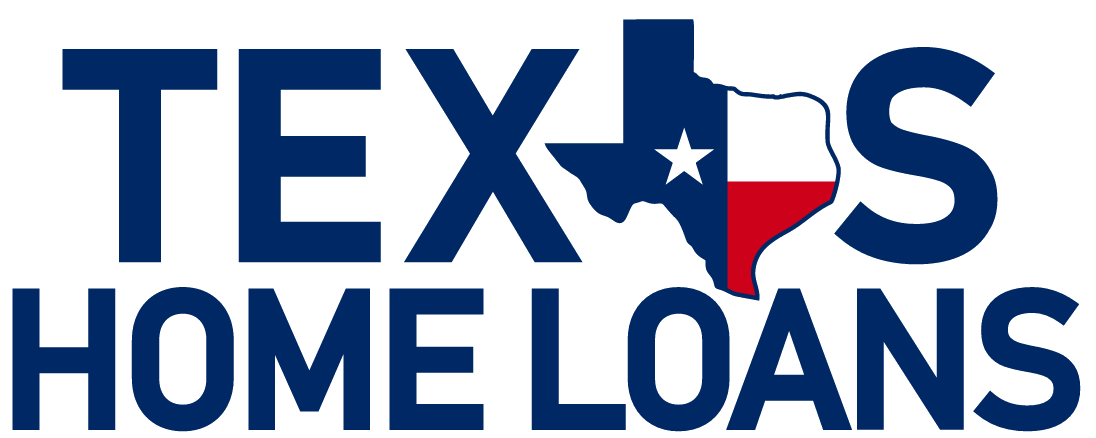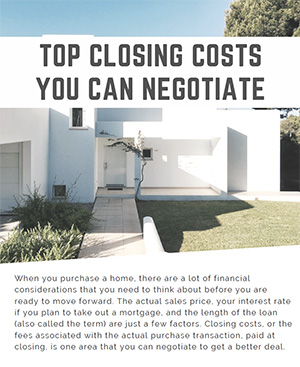Why Spring is a Prime Time for Real Estate Spring consistently ranks as one of…
Avoiding Private Mortgage Insurance on Your Next Texas Home
In the competitive Texas real estate market, securing a mortgage loan often involves understanding the intricacies of private mortgage insurance (PMI). While PMI allows buyers to enter the market with a lower down payment, it also adds an extra expense to monthly payments. This comprehensive guide will explore various strategies for Texas homebuyers to avoid PMI and potentially save thousands of dollars over their loan term.
Private Mortgage Insurance
Private mortgage insurance (PMI) is typically required when homebuyers put down less than 20% on a conventional loan. It serves as protection for the lender in case the borrower defaults on the loan. PMI payments can add to your monthly mortgage costs. However, once you have enough equity in your home, you can request PMI cancellation. Understanding the intricacies of PMI and its implications on your mortgage balance is essential for making informed decisions regarding your home loan.
What is PMI and How Does it Work?
PMI is essentially a financial safety net for lenders. When you make a down payment of less than 20% on a conventional mortgage, your loan amount represents a higher percentage of the total home value, increasing the risk for the lender. PMI steps in to mitigate this risk.
Here’s how it works: If you, the borrower, default on your mortgage payments – meaning you stop paying your mortgage – PMI protects the lender from incurring significant financial losses. The insurance company that provides the PMI will reimburse the lender for a portion of the loan amount, covering potential losses from foreclosure or selling the property at a lower price than the outstanding mortgage balance.
However, it’s crucial to remember that PMI protects the lender, not you. While you, the borrower, bear the cost of the insurance, the benefits primarily serve the lender in case of default.
The Impact of PMI on Your Monthly Mortgage Payments
Including PMI in your mortgage comes with a financial impact. It translates to an extra expense added to your monthly mortgage payment. While this cost can vary depending on factors like loan amount, interest rate, and credit score, it generally ranges from 0.5% to 1% of the total loan amount annually.
Imagine this: on a $300,000 mortgage, you could end up paying an additional $1,500 to $3,000 per year just for PMI. Over time, these seemingly small amounts can accumulate, significantly increasing the total cost of your home loan.
Understanding this potential financial burden makes exploring ways to avoid PMI a worthwhile endeavor, especially for budget-conscious homebuyers in Texas.
Common Strategies to Avoid PMI
Fortunately, Texas offers a range of strategies for homebuyers aiming to bypass the added cost of PMI. From making a substantial down payment to exploring specialized loan programs, savvy homebuyers can navigate the mortgage landscape strategically to sidestep this added financial obligation.
These strategies cater to various financial situations and eligibility criteria, allowing a broader range of homebuyers in Texas to secure favorable loan terms and achieve homeownership without the burden of PMI.
Making a 20% Down Payment
The most straightforward route to avoiding PMI is making a down payment of 20% or more of the home’s purchase price. By reaching this threshold, you instantly lower your loan-to-value ratio (LTV), indicating to the lender that you pose a lower risk.
A lower LTV translates to favorable loan terms, including the elimination of the PMI requirement. Mortgage lenders view borrowers who contribute a substantial down payment as more financially secure and committed to the investment, reducing their lending risk.
However, saving for a large down payment requires careful planning and financial discipline. It’s essential to weigh the benefits of avoiding PMI against the time it might take to save such a significant amount, considering your individual financial circumstances and goals.
Utilizing VA Loans for Veterans and Military Families
For eligible veterans and military families, VA loans offer an attractive pathway to homeownership without the burden of PMI. Backed by the Department of Veterans Affairs, these loans provide unique benefits tailored to those who served our country, making the dream of owning a home in Texas more attainable.
Unlike conventional loans, VA loans don’t require a down payment or PMI, significantly reducing the upfront costs associated with home buying. However, VA loans come with a one-time funding fee, which can be paid upfront or rolled into the loan amount. This fee helps offset the program’s costs for taxpayers.
If you qualify for a VA loan, consulting with a knowledgeable loan officer can help you navigate the details and determine the best financial strategy for your individual situation.
Benefits of a VA Loan
The most significant advantage of VA loans lies in their ability to eliminate the financial burden of private mortgage insurance. By not requiring PMI, these loans translate to substantial savings for eligible veterans and their families, freeing up funds for other essential expenses.
Moreover, VA loans typically come with competitive interest rates, further reducing the overall cost of homeownership. These financial advantages, coupled with the loan program’s flexibility and relaxed eligibility requirements, solidify VA Loans as a valuable resource for those who have served in the military, honoring their service with a tangible benefit toward achieving their homeownership dreams.
Eligibility Requirements for VA Loans
While VA loans offer a significant advantage in avoiding PMI, it’s essential to meet specific eligibility requirements to qualify for this loan program. Generally, borrowers must meet certain service requirements, typically serving a minimum period in active duty or during wartime.
The Department of Veterans Affairs outlines these service requirements, ensuring that only those who honorably served their country can access the program’s benefits. To determine your eligibility, you can apply for a Certificate of Eligibility (COE), which documents your service history and confirms your eligibility for a VA loan.
Understanding these requirements is a crucial step for veterans and military families considering a VA loan to make their homeownership goals a reality.
Comparing VA Loans with Traditional Mortgage Options
When considering the best mortgage option, comparing VA loans to conventional loans becomes crucial, especially concerning PMI. While VA loans excel in eliminating PMI, they might come with slightly higher interest rates than conventional loans, impacting your overall loan costs.
Conventional loans, on the other hand, often offer lower interest rates but come with the potential burden of PMI if your down payment falls below 20%. This trade-off highlights the need for a thorough assessment of your individual financial situation and goals.
Factors like your credit score, down payment amount, and long-term financial plans all play a role in determining which loan type suits you best. Consulting with a mortgage professional can shed light on these aspects, enabling you to make an informed decision aligned with your specific needs.
Alternative Options to Consider
Beyond VA Loans, Texas offers alternative options that can help you avoid PMI altogether or minimize its financial impact. These options cater to diverse financial situations, empowering a broader range of homebuyers to achieve their goal of homeownership without the added weight of PMI.
From government-backed loan programs catering to specific demographics to state-sponsored initiatives designed to bolster homeownership rates, understanding your options can guide you towards a more accessible and affordable home buying experience. Remember to research and explore all available avenues to find the perfect fit for your financial profile and homeownership aspirations.
First-Time Home Buyer Programs in Texas
The Lone Star State extends a welcoming hand to first-time homebuyers through a variety of programs designed to make homeownership more accessible. These programs aim to remove financial hurdles and open doors for those taking their first steps into the real estate market.
Maximizing Home Equity to Eliminate PMI
Building home equity doesn’t stop after purchasing your home. By strategically managing your mortgage and exploring avenues to increase your property’s value, you can accelerate the process of eliminating PMI and free up your monthly budget from this added expense.
Whether choosing to make accelerated payments towards your principal or investing in renovations that enhance your home’s market value, a proactive approach to building equity can translate to substantial long-term savings and increased financial freedom.
Accelerating Your Mortgage Payments
If your budget permits, making additional payments toward your mortgage principal, beyond your regular monthly installment, can significantly accelerate your path to reaching 20% equity. These extra payments chip away at the loan’s principal balance faster, leading to a lower LTV ratio sooner.
While it might seem counterintuitive to make extra payments when your current mortgage interest rate is relatively low, consider this: by reducing your principal balance faster, you shorten your loan term and ultimately pay less interest overall.
Remember that even a small increase in your monthly payments can make a big difference over time. Consult with your loan servicer to understand the best way to make principal-only payments and maximize the impact of your contributions.
Home Renovation and Improvement to Increase Value
Another strategic approach to eliminating PMI involves enhancing your home’s value through renovations and improvements. By investing in upgrades that align with current real estate market trends, you can potentially increase your home’s worth, leading to higher equity.
Whether it’s a kitchen remodel, bathroom upgrade, or energy-efficient additions, carefully planned renovations can significantly impact your home’s appeal and, consequently, its market value. However, it’s crucial to approach renovations strategically.
Prioritize upgrades that yield a high return on investment in your local real estate market. Consulting with a real estate agent or a qualified contractor can help you make informed decisions that maximize your renovation budget and boost your home’s overall value, leading to faster PMI elimination.
Frequently Asked Questions
How can I avoid paying for private mortgage insurance on my next Texas home?
To avoid private mortgage insurance in Texas, consider making a down payment of 20% or more, exploring options like VA loans or USDA loans, or leveraging first-time homebuyer programs that offer down payment assistance or reduced PMI costs. Building home equity quickly by making additional payments toward the loan principal can also accelerate PMI cancellation.
Are there any specific loan programs or options that do not require private mortgage insurance?
Yes, VA loans and USDA loans stand out as loan programs that do not require private mortgage insurance. These government-backed loans offer unique terms and benefits, catering specifically to veterans, military families, and eligible rural borrowers.
How do VA loans help in avoiding PMI?
VA loans, backed by the Department of Veterans Affairs, allow eligible veterans and military families to purchase homes without requiring private mortgage insurance (PMI). Instead of PMI, VA loans have a one-time funding fee.
Are there any specific first-time home buyer programs in Texas that help avoid PMI?
Yes, the Sweet Texas Home Loan Program provides assistance to first-time homebuyers in Texas, potentially offering options for reduced or eliminated PMI, down payment assistance, and competitive interest rates, making homeownership more attainable.
How can increasing home equity help in getting rid of PMI sooner?
Increasing your home equity reduces your loan-to-value ratio. Once your LTV reaches 80%, you can request PMI cancellation from your lender. You might be able to cancel sooner if your home appreciates in value in a strong real estate market.
Conclusion
Understanding how to avoid private mortgage insurance in Texas can lead to significant savings over time. From making a 20% down payment to exploring VA loan benefits and leveraging home equity, there are various strategies available. By carefully considering these options and comparing them with traditional mortgage choices, you can make an informed decision that aligns with your financial goals. Whether you are a first-time homebuyer or looking to eliminate PMI through home improvements, being proactive in your approach can lead to a more financially secure homeownership journey in Texas.





